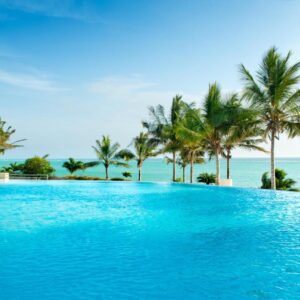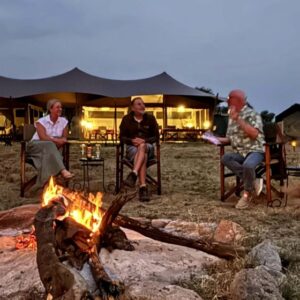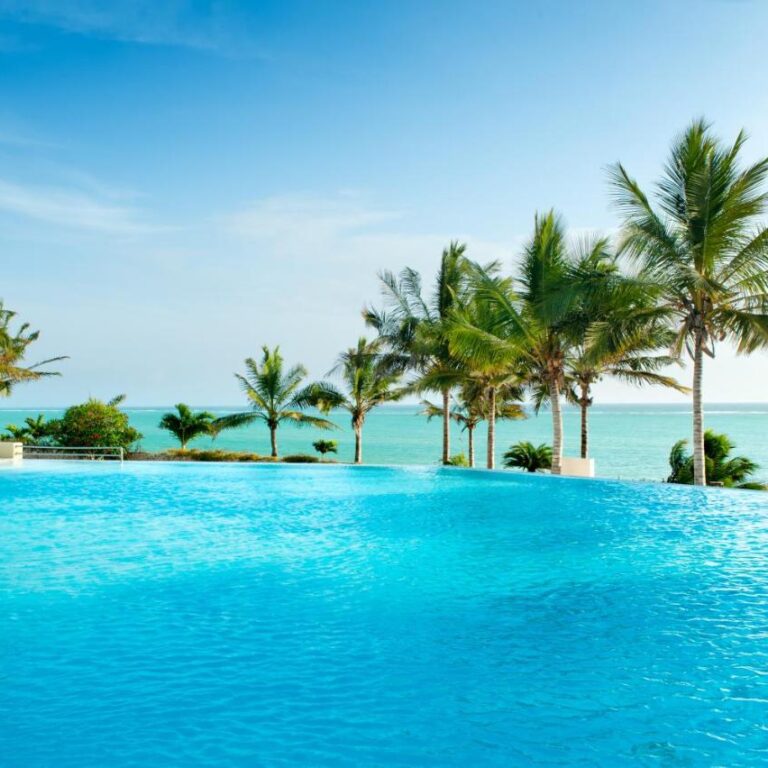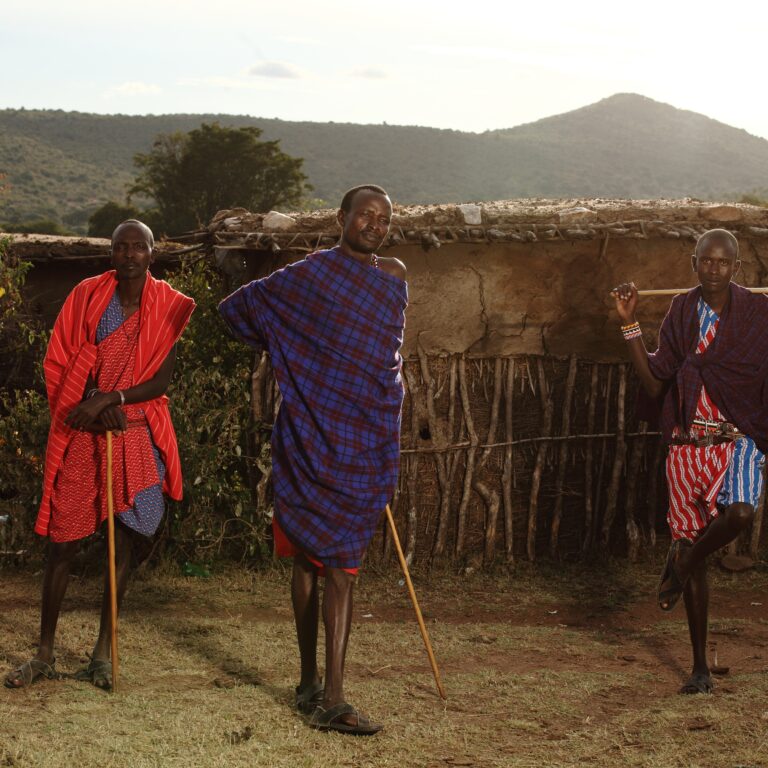What should I wear for summit night on Kilimanjaro?
Summit night on Kilimanjaro – the culmination of days of trekking, the ultimate test of your physical and mental fortitude. But amidst the excitement, there’s one crucial question: what do you wear? Getting the right gear is essential for summit night. You’ll be facing frigid temperatures, biting winds, and potentially even snow. Dress wrong, and you risk hypothermia, frostbite, and a miserable experience that could jeopardize your summit bid.
It’s important to note that layering is key when dressing for summit night on Kilimanjaro. You should have multiple options for each layer, so you can adjust your clothing based on the conditions. You should also bring extra clothing and gear in case of unexpected weather changes.
Head Wear for Kilimanjaro summit night packing list
For your Kilimanjaro summit night, pack a warm, insulated beanie or balaclava to protect against the freezing temperatures. Opt for moisture-wicking materials to keep sweat at bay and ensure comfort. A snug fit is essential to retain heat and shield against wind chill. Remember, proper headwear is crucial for maintaining body warmth and preventing cold-related issues at high altitudes.
- Balaclava: Cover your mouth, nose, ears, and cheeks with a balaclava. It’s essential to keep your head warm.
- Beanie
- Head torch
- Sunglasses (or ski goggles)
- Lip balm
- Sunglasses: Even though summit night begins in the dark, you’ll reach the summit right around sunrise. Protect your eyes from the sun’s sharp rays.
- Sunscreen: Apply sunscreen to your face, even though most of your body is covered. Sunburn can still occur.
Upper body Wear for Kilimanjaro summit night packing list
Prepare for Kilimanjaro’s summit night with essential upper body wear. From insulated jackets to base layers, ensure warmth and comfort during the challenging ascent. Maximize performance with lightweight yet durable clothing tailored for extreme conditions.
- Moisture-wicking compression top: Start with a dry-wick compression top as the layer closest to your body. This fabric wicks away sweat, preventing it from becoming cold and sticking to your skin.
- Long-sleeved thermal top: Layer a long-sleeved thermal top over the compression top for added insulation.
- Fleece Jacket: Next, wear a fleece or softshell jacket. Some climbers even double up on fleece jackets if they tend to get very cold.
- Waterproof, breathable jacket with hood: Put on a waterproof jacket to repel rain and snow. Waterproof jackets over fleece layers provide excellent warmth.
- Insulated down or synthetic jacket: The final layer for your upper body should be a heavily insulated down jacket. Down jackets keep you extremely warm regardless of weather conditions.
- Neck Gaiter or Buff
Hands Wear for Kilimanjaro Summit Night
For the Kilimanjaro summit night, choose gloves designed for extreme cold. Opt for insulated, waterproof gloves with grip, ensuring warmth and dexterity. Consider layers to adjust to temperature changes. Mittens over gloves offer extra warmth. Prioritize comfort and functionality to protect against frostbite and maintain grip on rocky terrain.
- Inner gloves
- Thermal gloves
- Ski mittens
Legs wear for summit night on Kilimanjaro
For your Kilimanjaro summit night, choose leggings or thermal base layers to keep warm. Pair with insulated pants or waterproof trousers to shield against wind and snow. Opt for moisture-wicking fabrics to stay dry and comfortable. Ensure layers are breathable and flexible for ease of movement. Don’t forget gaiters to protect against snow entering your boots. Prioritize warmth, comfort, and functionality for a successful ascent.
- Moisture-wicking leggings
- Thermal leggings
- Waterproof hiking pants
- Fleece pants
- Gaiters (optional)
Feet wear for summit night on Kilimanjaro
For summit night on Kilimanjaro, your footwear must be sturdy and insulated. Opt for high-quality, waterproof hiking boots with excellent traction to navigate rugged terrain and icy conditions. Ensure they are comfortable yet provide ankle support to reduce the risk of injury during the challenging ascent. Thick, moisture-wicking socks are essential to keep your feet dry and warm in the freezing temperatures.
- Boots
- Sock liners (or thin, moisture-wicking socks)
- Thermal socks
Don’t Forget the Accessories for Kilimanjaro summit night
- Headwear: A warm beanie or balaclava is essential to keep your head and ears warm.
- Neck gaiter: Provides warmth and versatility – wear it around your neck, face, or head.
- Gloves: Two pairs – a thin liner for dexterity and a thicker, waterproof pair for warmth.
- Socks: Thick wool or synthetic socks will keep your feet toasty. Consider bringing an extra pair in case they get wet.
- Headlamp: Crucial for navigating in the dark. Get a headlamp with extra batteries and a spare bulb.
- Trekking poles: Provide stability and support, especially on the loose scree slopes.
Kilimanjaro summit night packing list Tips:
- Layers, not bulk: Opt for lightweight, compressible layers instead of heavy, bulky ones.
- Test your gear: Wear your summit night clothes at home, even if it’s just for a few minutes, to ensure they’re comfortable and fit well.
- Be prepared for the unexpected: Pack an extra base layer, gloves, and socks in case yours get wet.
- Listen to your body: If you start feeling cold, add a layer. If you’re sweating, remove a layer. Don’t be afraid to adjust your clothing throughout the night.
- Remember: Summit night is no time for fashion statements. Prioritize warmth, functionality, and comfort. Your clothing should be your ally, helping you conquer the cold and reach the top of Africa.
Bonus tip: Pack a small hand warmer pouch to keep your fingers toasty during rest stops.
With the right gear and mindset, you can conquer the cold and make summit night on Kilimanjaro an unforgettable experience. So pack smart, dress warm, and prepare to witness the breathtaking sunrise from the Roof of Africa!
Should I bring spare clothing for Kilimanjaro summit night?
Yes, it’s highly recommended to bring spare clothing for summit night. Having extra layers ensures that you can adjust to changing weather conditions or if your primary clothing gets wet. It’s better to be over-prepared than underprepared for the cold.
What makes summit night on Kilimanjaro different from other nights?
Summit night on Kilimanjaro is distinct because it involves trekking to the highest point, Uhuru Peak, during the early morning hours. The temperatures are extremely low, and the terrain can be challenging, requiring specialized clothing.
What clothing do you need to climb Kilimanjaro?
On Kilimanjaro, you will need to bring a full complement of rain gear – including a rain jacket (above) and rain or waterproof pants. A warm down or synthetic weatherproof jacket (above) is essential. Lastly, you can choose to bring gaiters to keep snow, moisture, and gravel out of your boots.
How hard is Kilimanjaro summit night?
Summit night (or summit day) is by far the most challenging part of the entire Kilimanjaro trek. There are a few reasons for this: It’s so gosh-darn bleeping cold!!
What to wear on summit Day Kilimanjaro?
Expect extreme cold at the summit!
- Balaclava. A balaclava is a fantastic piece of clothing for keeping your face, head and neck warm, especially during the night-time portion of summit day.
- Beanie. A knit or synthetic beanie is key in keeping your head warm.
- Head torch.
- Sunglasses (or ski goggles)
- Lip balm.
- Sunscreen.
What happens if my clothing gets wet during the ascent?
If your clothing gets wet during the ascent, it can lead to discomfort and increase the risk of hypothermia, especially in cold conditions. It’s crucial to have moisture-wicking base layers and waterproof outer layers to help manage moisture and stay dry.
Are there any specific clothing restrictions for summit night?
While there are no specific clothing restrictions for summit night on Kilimanjaro, it’s essential to adhere to layering principles and choose clothing that provides adequate insulation, moisture management, and protection from wind and precipitation.
Is it necessary to bring extra layers for the descent?
Yes, it’s advisable to bring extra layers for the descent from Kilimanjaro’s summit. As you descend to lower elevations, temperatures may rise, and having lighter layers allows you to adjust to warmer conditions comfortably.
How cold does it get during summit night on Kilimanjaro?
Temperatures can drop significantly, reaching well below freezing point. At the summit, temperatures may range from -10 to -20 degrees Celsius (14 to -4 degrees Fahrenheit), making proper clothing crucial for your safety and comfort.
What base layers should I wear?
Dress in moisture-wicking base layers to keep sweat away from your skin. Choose thermal underwear made of materials like merino wool or synthetic fabrics to provide insulation while maintaining breathability.
What kind of insulating layers are recommended?
Wear insulating layers like fleece jackets or down jackets to trap and retain body heat. These layers are essential for warmth during the freezing temperatures encountered at higher altitudes.
How should I protect against wind and precipitation?
A windproof and waterproof jacket and pants are essential to shield against the biting winds and potential snow or sleet. Make sure the outer layers are breathable to prevent excessive sweating.
What type of pants are suitable for summit night?
Choose insulated and windproof pants that are comfortable for movement. Consider pants with full-length zippers for ventilation during strenuous climbs.
What about headwear and gloves?
Wear a thermal hat that covers your ears to protect against extreme cold. Thick, insulated gloves are crucial for maintaining dexterity in your fingers. Bring an extra pair in case one gets wet.
Are gaiters necessary for summit night?
Gaiters can be beneficial for keeping snow and debris out of your boots. They provide an additional layer of protection against the elements, especially if you encounter snow on the ascent.
Why summit Kilimanjaro at night?
Firstly, the conditions at night offer you more favorable weather conditions with clearer sky’s early in the morning. There is normally a build up of clouds starting around mid day on Kilimanjaro. You can be lucky summitting later in the morning, but from our 20 years of climbing Kilimanjaro clear views are limited.
What gear and clothing to pack for Kilimanjaro?
Pack lightweight, moisture-wicking clothing: base layers, insulating layers, waterproof jacket and pants. Include a warm hat, gloves, and sturdy hiking boots. Don’t forget sunglasses, sunscreen, and a wide-brimmed hat for sun protection. Bring a sleeping bag rated for cold temperatures and a comfortable backpack. Opt for high-quality gear, including trekking poles and a headlamp. Keep it minimal to ease your ascent on Kilimanjaro.
Should I wear specialized footwear for summit night?
Insulated and waterproof boots are essential. Ensure they are comfortable, well-broken-in, and suitable for use with crampons if needed.
How should I layer my clothing to regulate temperature during the climb?
The key is to use a layering system, allowing you to adjust your clothing as needed. Start with a base layer, add insulating layers, and finish with a waterproof and windproof outer layer. This way, you can regulate your body temperature based on the changing conditions.
Are there any specific considerations for people prone to altitude sickness?
Individuals susceptible to altitude sickness should pay extra attention to staying warm, as cold exacerbates symptoms. Adequate hydration and gradual acclimatization are also crucial.
What additional items should I pack for summit night?
Don’t forget essentials like sunglasses, a headlamp with spare batteries, and hand warmers. These items will enhance visibility and keep you comfortable during the nighttime ascent.
Always consult with your tour operator or guide for specific recommendations tailored to your Kilimanjaro climb, as conditions can vary, and they can provide valuable insights based on the current weather forecast.








